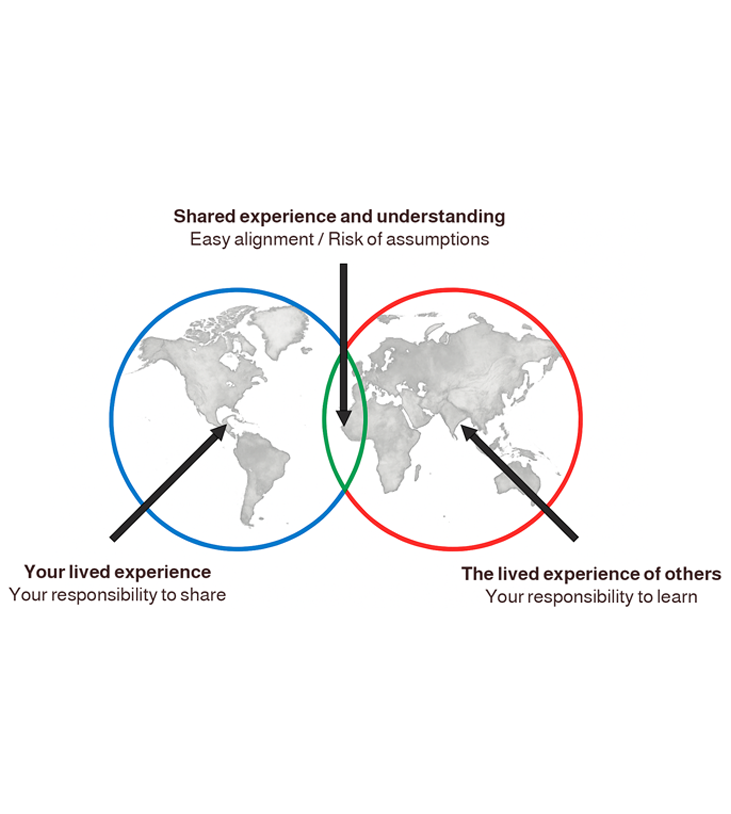The Communication Model: Mapping Shared Worlds
This Communication Model is a framework that illustrates how individuals can navigate their unique perspectives, or "maps of the world," while connecting with others. Depicted as two overlapping circles—one blue representing "Your lived experience" and the other red for "The lived experience of others"—the model highlights a green overlapping area labeled "Shared experience and understanding." This central zone signifies where perspectives align easily but also carries the risk of assumptions. Arrows point inward, emphasizing that sharing your own experience and learning about others’ experiences are mutual responsibilities.
Understanding the Model:
Your Lived Experience: Each person carries a unique map shaped by their personal history, values, and encounters. This blue circle represents your perspective, which you have a responsibility to share. Failing to do so is seen as a loss, as your distinct viewpoint enriches the world.
The Lived Experience of Others: Similarly, others have their own maps, shown in red. Understanding these requires active effort and openness, making it your responsibility to learn from them.
Shared Experience and Understanding: The green overlap is where common ground exists, enabling easy alignment. However, it also poses a risk of assumptions—assuming others see the world as you do without verifying.
The Goal: The model encourages assessing your own map—its similarities and differences with others’ maps—and seeking to understand those differences. The aim is to expand your knowledge by mapping out these diverse worlds as fully as possible, fostering deeper connections.
This model underscores that self-awareness and empathy are incomplete without this two-way exchange. Too often, fear prevents us from sharing our unique perspectives, yet doing so is vital. Likewise, not exploring others’ maps leaves our understanding of the world partial.
The Communication Model offers practical ways to enhance interpersonal understanding and collaboration:
Self-Reflection: Take time to map your own experience. Journal about your values, past influences, and how they shape your views. Recognize what you’re comfortable sharing and why.
Active Sharing: In conversations or team settings, openly express your perspective—e.g., “Based on my experience, I see this as…”—to invite dialogue. Overcome fear by starting with small, safe disclosures.
Curious Learning: Ask others about their experiences with open-ended questions like, “Can you share how you view this situation?” Listen without judgment to build their map in your mind.
Identify Overlaps and Gaps: During discussions, note where alignment occurs (shared experiences) and where differences arise. Use these insights to clarify assumptions—e.g., “I assumed we agreed on this; can we explore your take?”
Team Application: In leadership or group contexts, facilitate exercises where team members share their “maps” (e.g., through storytelling or role-playing) and discuss commonalities and differences to strengthen collaboration.
Ongoing Practice: Regularly revisit the model to refine your map and deepen your understanding of others, treating it as a lifelong process of connection and growth.
By embracing this model, you can bridge gaps, reduce misunderstandings, and enrich both your world and those of others through shared responsibility and mutual learning.
